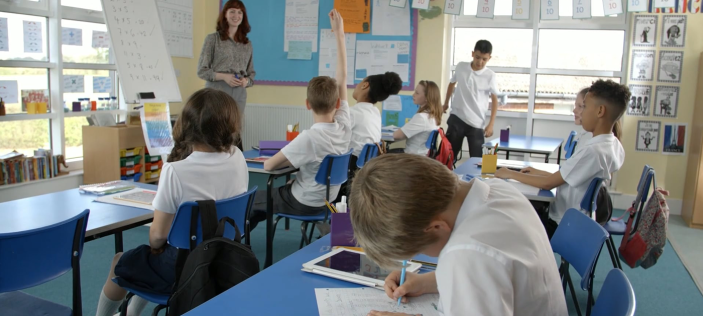“It ain’t what you do, it’s the way that you do it,” to quote from Bananarama (obviously my main reason for writing this blog). I would suggest that there is a nugget of truth to the words of the song. In education, at least, I know that sometimes the rush to new initiatives and continual improvement can lead to more emphasis on what is being done and rather less on how it is being done. I have every sympathy with schools, who often seem pulled from pillar to post with constantly changing agendas. Organisations like the EEF have done a great job in drawing attention to a range of different educational interventions and this can leave schools feeling that they need to find the next thing. Despite constantly saying that there is no silver bullet out there, I know that many wonder whether it is just that they have not found it …yet. Combine this with limited time and resources and a pressure to yield quick results and I think schools are in danger of spending less time on what I think would actually make the difference. I think the balance needs to shift – less time spent on constantly looking for something new to do and more on considering what is needed in the context of each school and how to ensure that this is planned and managed effectively so that it is done well.
“Putting Evidence to Work - A School’s Guide to Implementation” (EEF, February 2018) may have slipped under the radar for some schools, but I would heartily recommend reading it and suggest that this is the one EEF guidance report that underpins all others. In this blog, I reflect on my experience working with schools and on the EEF report to highlight some of the key factors that schools might consider as they write and execute their school development and action plans.
Don’t try to do too much
Schools are continually improving systems but bound by finite time and resource. One of the biggest limiting factors to successful implementation can be lack of capacity to truly commit. It is ever more important to define exactly what school priorities are and to keep these manageable or there will be the chance of schools doing everything and achieving nothing.
Be precise about what you are aiming to achieve
What is the problem that you are trying to solve? Time spent on really understanding the answer to this question is time well spent. Be careful not to fall into the trap of picking an intervention off the shelf because it is there. Does it solve the problem you actually have? In fact as a school, you may already have tried to solve this problem before, so consider what you learnt from any previous experience. Is this about tweaking what you already have or is there a need for wholesale change? Consider the options and school needs and reflect on the evidence of what others have done effectively in similar contexts. What could you do to solve your problem?
Plan for success
One of my favourite sentences in the whole EEF guidance is, “Treat implementation as a process, not an event.”[1] How often do we plan a one off training session or a discrete monitoring activity? Yet we know that the coordinated development of an idea with support provided over a period of time will have increased chance of impact and is more likely to be sustained. Successful implementation will be based on considering your specific school context and planning the process carefully.
Is your school ready for this? Is there a shared understanding of what you are trying to achieve? Do you have the capacity and resource to allow this to be successful?
What exactly will the intervention or change in practice look like? How will things change?
What is necessary to make this happen? When will non-negotiables be needed and when will it be necessary for leadership to be looser?
What support will be needed at different stages towards implementing this? What external support and internal capacity will be drawn on at different points?
What are you expecting to see at the various stage of implementation? What are the expected outcomes?
In planning the stages carefully, consider all levels of the organisation and their needs. As the EEF guidance identifies, “Typically, the application of a single strategy alone will be insufficient to successfully support the implementation of a new approach.”[2] It is therefore imperative to identify specific needs at different organisational levels and carefully plan to meet these in an appropriate sequence and so that different strategies reinforce each other. In addition to planning for staff needs, ensure that structural changes are made so that changes in practice can happen.
As an example, I can think of one school, whose focus was developing pupils’ use of accurate mathematical language. They carefully planned buy in to the vision and upfront teacher training, ensured that they had the classroom resources to support their changes, made time for the initiative, had even set up a programme of peer discussion and development during the initial stages and had planned in time for review and evaluation. However, the school had forgotten to consider support staff needs. Some teaching assistants misunderstood sessions designed to focus on accurate mathematical talk and unwittingly diverted attention from the use of language towards completing and recording calculations. By forgetting to plan for support staff understanding and development, the initiative was jeopardised.
Make sure you take your team with you
It is essential that all staff understand the vision for what is trying to be achieved and this permeates across all areas of school life. When considering how to develop parental engagement within one school, I remember that across all meetings with different groups: SLT, governors, teaching staff, support staff, external visitors, parent groups… there became a familiar addition “What about parents? Where do they fit into this?” Through pulling together what was known about the school challenge and what was needed from a range of stakeholders, the problem became focused and the vision became a share one.
Although school leaders will be key players in ensuring that the implementation is aligned with the school’s mission, shared widely with the team and remains a priority, other members of staff will be key in success. Can you make use of school opinion leaders through assigning them new initiative and use these to model to and support others? What matters is how the new changes become a lived reality within school and this will be everyone’s responsibility.
A culture of openness to evaluate honestly and a feeling of trust to try out things and make mistakes is crucial. This kind of culture takes time to build and when starting out it is key to know who your blockers and your champions are. Champions can be used to build capacity and drive and blockers should be ignored at your peril. Blockers can tell you much about where staff feel vulnerable and understanding this can enable issues to be tackled.
Be practical
There is much evidence that high-quality up-front training for teachers is beneficial in enabling successful implementation[3] [4]. It is crucial to ensure that all key individuals receive this training, which should support understanding of the theory and rationale for new approaches and introduce necessary skills, knowledge and strategies. It is also key to ensure that senior leaders are fully aware of the training received if they do not attend it and can support staff to answer any logistical questions that they may have as an outcome. At a recent INSET I delivered, it was enormously important that senior leaders including the Headteacher were all present as this meant that they could hear staff anxieties and be able to address these and clarify expectations.
In addition to the initial training that will have allowed staff to reflect on how their practice will change, there needs to be time to address practicalities and changes in behaviour that might be needed. For example, after an initial INSET training, I worked with teachers to provide some practical follow up support. Key questions such as: “How will it change my planning process? How do I actually access the resources? Can I translate images onto my Smartboard?” These are all significant questions in allowing teachers to implement their new approach effectively. Once initial questions have been answered, follow up coaching will almost inevitably be needed to provide follow-on modelling, feedback and support.
Review progress rigorously
Be clear about what you are expecting to see at different stages of implementation. In schools, time is always at a premium so ensure that time is scheduled in to monitor and reflect on progress and to refine changes over time.
What will be the early indicators?
How will you know that the changes are having an effective outcome over time?
What will it look like when the changes are embedded?
Remember that progress in not linear. There will be bumps along the road and how these are actively looked for and responded to will mark out how well changes can become embedded. Depending on the stage of implementation, there may be a need to ensure fidelity to the initial approach and there may be a need to consider adaptations to ensure that change becomes part of daily practice.
Sustain and celebrate
Once you have got to the point that staff are routinely using the new approach or intervention, it is key that this is sustained over time. This is also a crucial time to reflect on what has worked and why. Reflection at this point will support better understanding of the implementation process, which may well be able to be applied to other developments. Celebrating successes can motivate and also allow wider understanding and application of the change. As the EEF guidance identifies however, don’t leave this phase of implementation until you get to it - plan for it from the outset.
Learn lessons
I would suggest that even if an educational initiative is found not to work, after time spent developing implementation, this will enable the next decisions made by the school to be even more robust. If leaders have planned well for implementation, they will be more aware of the reasons that unsuccessful initiatives did not succeed and can be more precise and focused in establishing what is needed next. Self-evaluation before, during and after implementation will be key.
If we are going to give new educational ideas the chance to work and maximise impact, we need to give some quality time to implementation and ensuring that this is carefully planned for and managed. After all, “Ultimately, it doesn’t matter how great an educational idea or intervention is in principle; what matters is how it manifests itself in the day-to-day work of people in schools.”[5]
References
[1] Putting Evidence to work: A school’s guide to implementation (2018) Education Endowment Foundation, p3
[2] Putting Evidence to work: A school’s guide to implementation (2018) Education Endowment Foundation, p10
[3] Putting Evidence to work: A school’s guide to implementation (2018) Education Endowment Foundation, p22
[4] Cordingley, P. et al (2015) Developing Great Teaching: Lessons from the international reviews into effective professional development. London: Teacher Development Trust
[5] Kenned, M. (2016) How does professional development improve learning? Review of Educational Re



